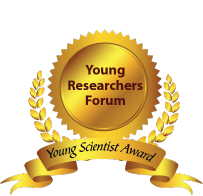Sepideh Madadkhani
Institute for Advanced Studies in Basic Sciences, Iran
Title: Electrocatalyst for water oxidation: Iron/Nickel/Zinc mixed oxide
Biography
Biography: Sepideh Madadkhani
Abstract
Statement of the Problem: Switching from fossil fuels to renewable energies is an inevitable task that should be performed in the near future to provide clean and sustainable energies for human beings. Water splitting toward hydrogen production is a promising approach to store such energies. In this regard, there are some bottlenecks for water splitting systems. Among different solutions, electrocatalytic water oxidation process is considered to be a breakthrough in water- splitting technology. Among the metal oxides, Ni/ Fe (oxy)hydroxide, which can be synthesized with different morphologies, stoichiometries and crystallinities, are able to catalyze the water-oxidation reaction in alkaline electrolyte solutions. Additionally, some research groups previously reported that Ni/Fe (oxy)hydroxides have the lowest overpotential toward water oxidation under the alkaline conditions. The purpose of this study is to describe a new procedure to synthesize an efficient Fe/Ni/Zn-based water-oxidizing catalyst by the thermal decomposition of a trimetallic organometallic compound. Characterization Methods: The catalyst were studied using scanning electron microscopy, transmission electron microscopy, electrochemical methods, X-ray diffraction, X-ray absorption spectroscopy, and X-ray photoelectron spectroscopy. Findings: In addition to Ni and Fe as important ions for water oxidation, the present organometallic compound includes Zn ion as an amphoteric ion which can be removed in the presence of KOH solution to obtain more active sites on the surface of the catalyst and thus a self-improvement is observed during reaction. On the basis of the obtained results, a structure similar to (Ni, Zn)Fe2O4 is proposed. The obtained nanosized oxide on FTO at pH=13 showed a current density of 12 mA/cm2 at 1.2 V. Long-time amperometry also indicated an increase in the current density. Continued CVs showed that the water-oxidizing activity of the compound increased during the cyclic voltammetry process. Since Zn ions are amphoteric, they can be soluble in KOH solution and results in a self-improvement for the catalyst. Removing the Zn ions from the NiFeZnOx structure may be a promising method to increase the catalytic activity of the present oxide. Conclusion & Significance: Introducing a new procedure to synthesize an efficient Fe/Ni/Zn-based water-oxidizing catalyst by the thermal decomposition of a trimetallic organometallic compound. The catalyst showed a good long-term stability and performance. The composition of the compound was characterized by some common methods and found to be an efficient wateroxidizing catalyst.

